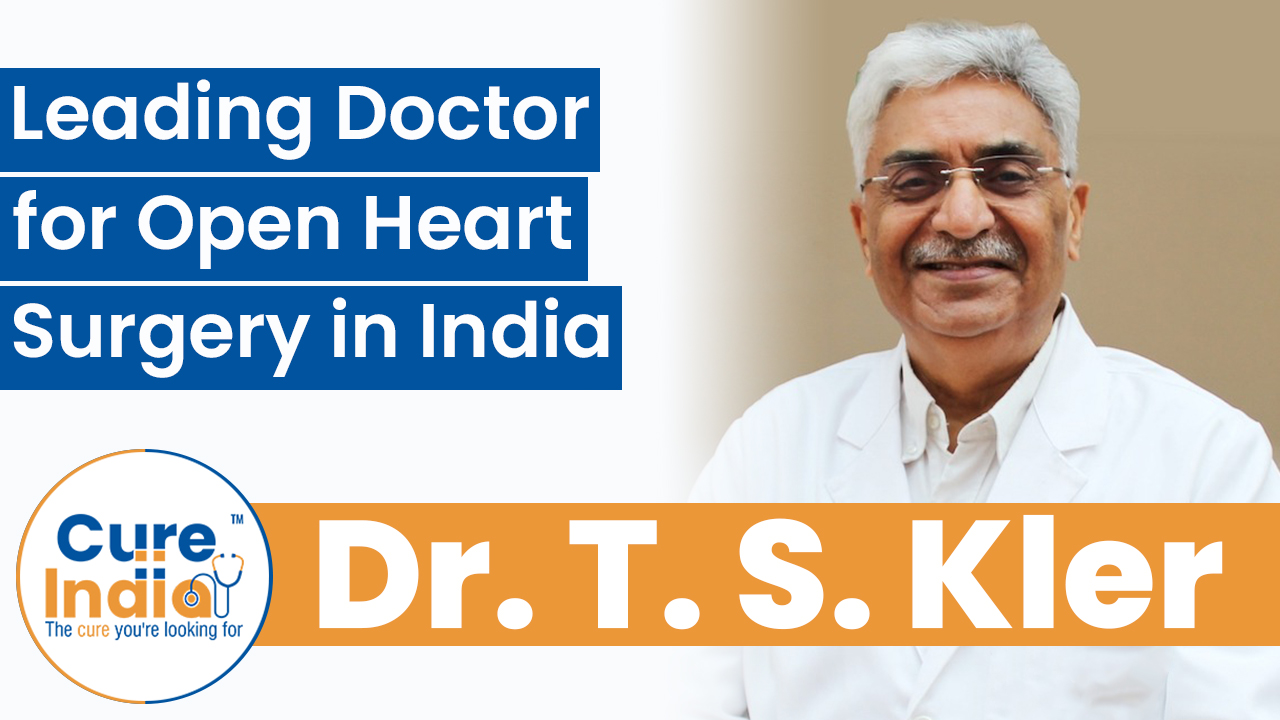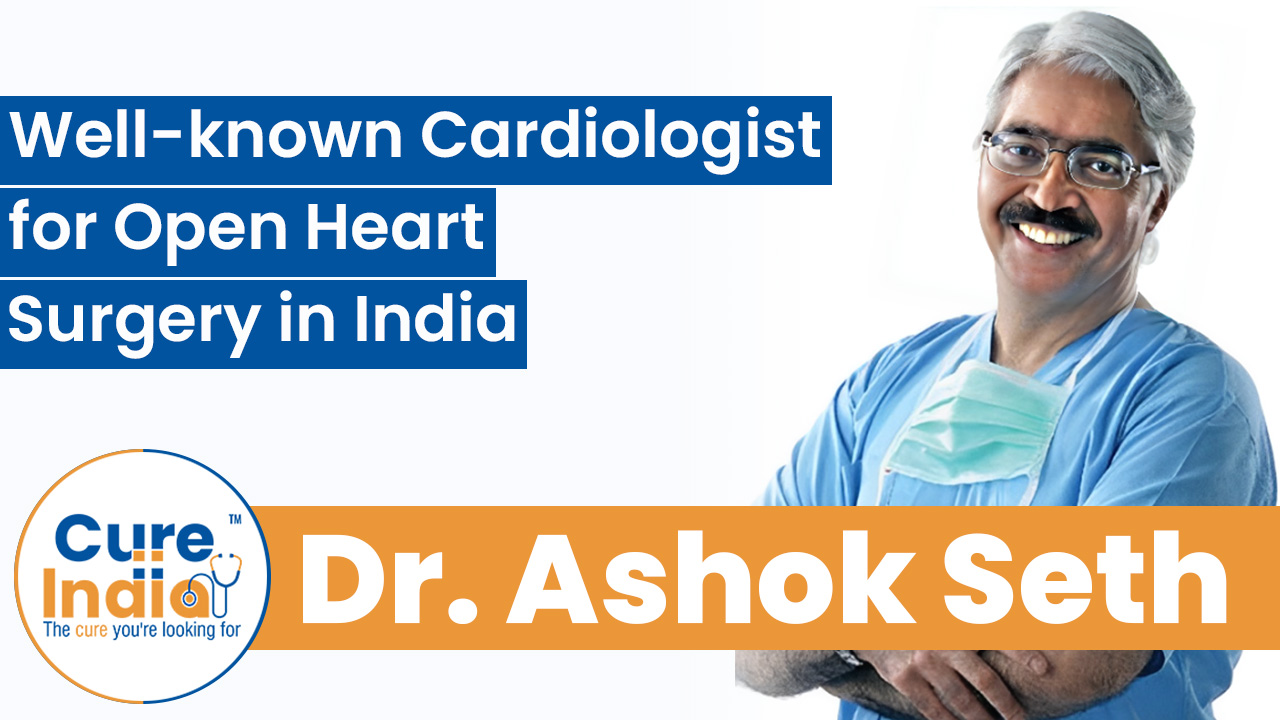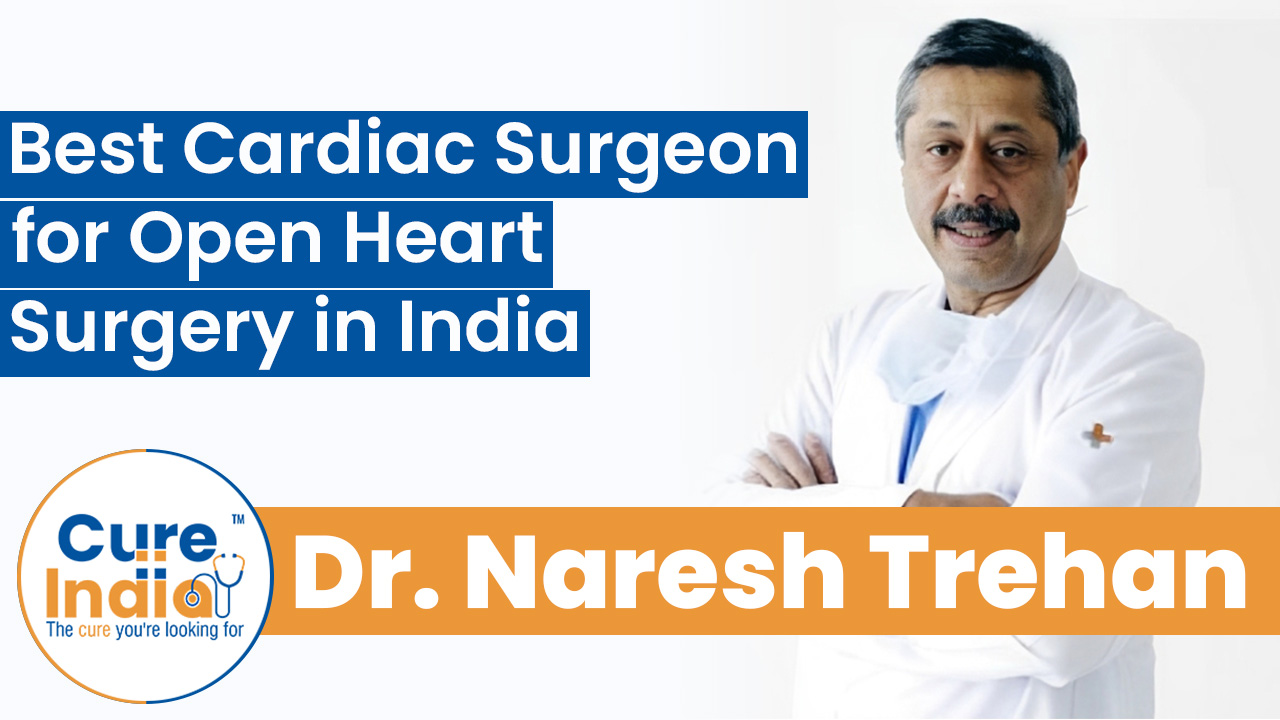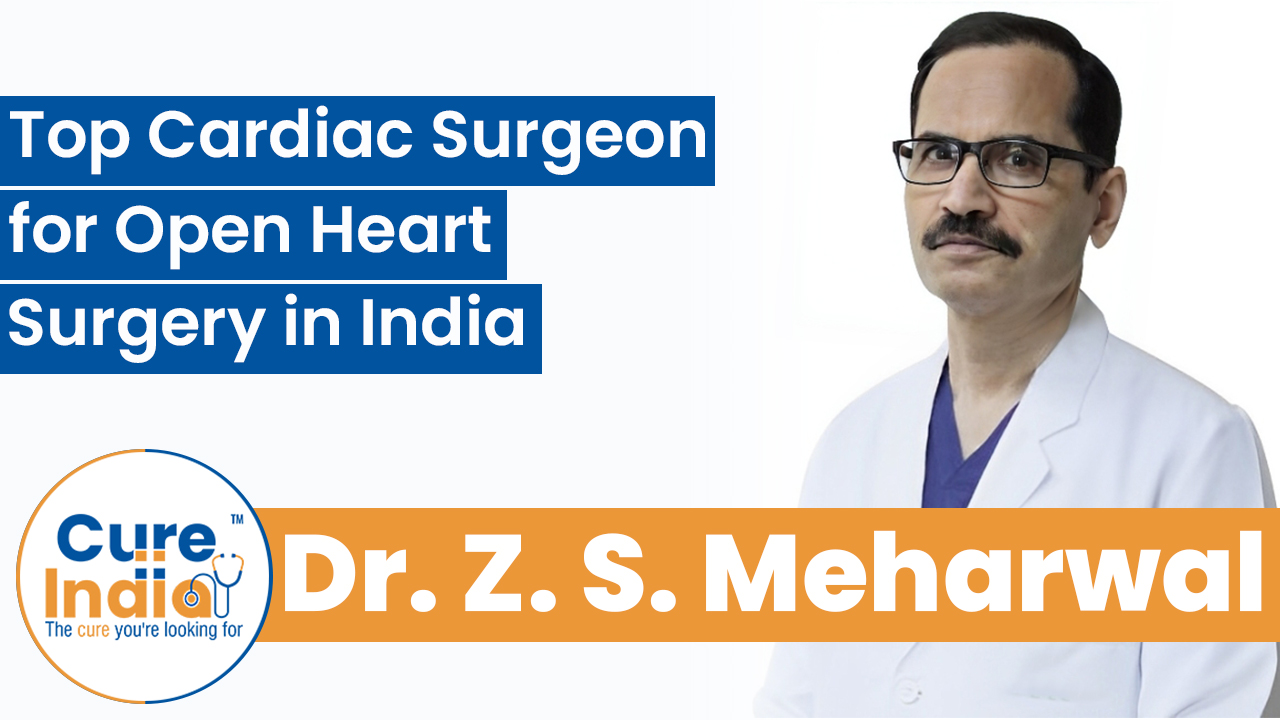

Open Heart surgery, also known as Coronary Artery Bypass Grafting (CABG), is a surgical procedure that is performed to treat narrowed or blocked arteries in the heart. During this procedure, the surgeon makes an incision/cut on the chest and the breastbone (sternum), spreads the ribs to reach the heart, and replaces the blocked artery with a healthy artery taken from other parts of the body. During this open heart surgery in India, the patient is placed on a heart-lung bypass machine to make the heart stop temporarily.
According to the World Health Organization (WHO), thousands of Africans travel out of their countries seeking advanced medical treatment for serious diseases and illnesses. Every year hundreds of patients from Kenya, Congo, Ethiopia, and Nigeria travel to India for their cardiac surgeries because of premium and cost-effective healthcare services. African patients receive high-class treatment for open heart surgery in India by the top open heart surgery doctors, at a low cost as compared to other countries.
An alternative to CABG is 'minimally invasive CABG' where a small incision is made between the ribs without cutting the bones. During this operation, the patient’s heart is beating during the operation, and most of the time there is no need to put the patient on a heart-lung bypass machine.
According to JCI- Joint Commission International, which is an organisation for healthcare accreditation that ensures patient safety, there are 45 JCI-accredited hospitals in India. They have their scheme for health insurance and they have tied up with 10 international health insurance companies to assist international patients to cover the medical cost. Also, India produces generic pharmaceutical drugs at an affordable price as compared to the West.
Depending upon the patient’s condition, the doctor decides the best cardiac treatment. Some of the most commonly performed open heart surgery and the types of open heart surgery in India are as follows:

CABG is the most commonly performed open heart surgery in India. A damaged heart artery is replaced by a healthy artery which is taken from another part of the patient’s body such as legs, arms, etc. Your surgeon will make an incision on the chest to get access to the heart. The doctor will put the patient on a heart-lung bypass machine until the surgery is completed. General anesthesia is given to the patient for a comfortable and painless procedure. An alternative to this procedure is a minimally invasive approach in which, instead of one big incision, small cuts are made to treat the condition.
The open heart surgery procedure and open-heart bypass surgery are similar. However, there is a slight difference in both of these surgeries. Open-heart surgery is not always performed to operate the heart. It could be done to operate any other area beneath your chest. However, Open heart bypass surgery is a procedure that is specific to the heart, it is a type of open-heart surgery. It is done to replace a diseased artery with a healthy artery.
It is an open heart surgery procedure that is used to treat Arrhythmia or irregular rhythm of the heart. ICD is a device placed under the skin and is connected to the heart. It keeps track of the heartbeats and uses electric shock to restore normal heart rhythm. There are 2 types of ICD devices: a traditional ICD whose wires are connected to the heart and it is placed in the chest and a subcutaneous ICD which is placed under the skin below the armpit and is generally bigger than the traditional ICD.
The heart valve is responsible for the normal flow of blood between different chambers of the heart. There are four valves of the heart. Defects in any one of the valves may require proper treatment. Heart valve replacement surgery is done to replace a defective valve with a mechanical valve or a biological valve from pig, cow, or human heart tissue. Depending on your valve condition, your doctor will suggest if you need a valve repair surgery or a valve replacement surgery. The valve repair surgery is less invasive as compared to the replacement surgery.
Untreated heart conditions or severity of heart conditions may lead to complete failure of the heart. Under such circumstances, a patient will need a heart transplant surgery. A heart transplant is a surgery where the diseased heart is replaced by the donor heart. It is a long procedure and you will be given anesthesia to make you unconscious during the surgery.
Those with severe heart failure may benefit from a heart transplant, in which a healthy heart is surgically implanted in place of the diseased one.
The open heart surgery cost in India depends upon many factors like- type of treatment/surgery, choice of hospital, location, charges of your selected surgeon/doctor, health condition of the patient, etc. The average cost of heart surgery in India ranges between $1,500 to $7,500. The list of average costs of most common heart surgeries in India is given below:
| Treatment | Cost in India | Stay in India |
|---|---|---|
| Coronary Angioplasty Open Heart Surgery in India | $4,000 | 10-12 Days |
| CABG Open Heart Surgery in India | $5,000 - $7,500 | 10-12 Days |
| AVR Open Heart Surgery in India | $6,000 | 10-12 Days |
| Permanent Pacemaker Open Heart Surgery in India | $4,000 | 7 Days |
| ASD/ VSD Surgical Closure | $6,000 | 10-15 Days |
Disclaimer: The cost mentioned above is the average cost. The total cost may vary between different hospitals.
Open heart surgery is a complex procedure that needs an experienced cardiac surgeon for its success. With CureIndia, you can connect with the most experienced and qualified cardiac surgeons for open heart surgery in India. The cardiac surgeons with CureIndia are highly experienced and experts in their field. Let us hear from some of the top surgeons for open heart surgery in India:





The open heart surgery procedure is performed to restore blood flow to the heart. If other measures taken immediately are ineffective, surgery may be performed as an emergency therapy for a heart attack. If you have the following conditions, your doctor may suggest a coronary artery bypass surgery:
Your doctor must know everything about your health and fitness before he declares your suitability for an open heart surgery. He should be well informed about what you incorporate in your body and how your body reacts to it.
Firstly, inform your doctor about all the medication you are taking without prescription such as food supplements or other medicines. Secondly, inform them if you are sick or have other health conditions. Thirdly, your doctor will recommend that you abstain from smoking and blood-thinning drugs for two weeks before surgery.
Before you go in for the open heart surgery, you and your doctor should discuss your alcohol intake. It's possible to experience alcohol withdrawal if you regularly consume three or more daily drinks and suddenly cut down shortly before surgery. Seizures and tremors are two examples of postoperative problems that this might cause. To lessen these possibilities, your doctor may assist you through alcohol withdrawal.
You may be instructed to use certain soap the day before surgery. Using this soap before surgery may help reduce the risk of skin infection afterward. Similarly, you can be told to abstain from all liquids and food after midnight. When you arrive at the hospital for surgery, your healthcare professional will provide further instructions.
The patient’s heart needs to stop temporarily so that the doctor can operate on the heart during the surgery. To achieve this, a heart-lung bypass machine is connected to your heart which will maintain blood pumping through your veins and arteries. This is known as on-pump surgery.
If the surgery can be accomplished by minimally invasive CABG, then there will be no need for the heart-lung bypass machine. The doctor will perform the surgery while the patient’s heart is beating. This is known as off-pump surgery.
Your doctor will decide whether you need CABG or minimally invasive CABG depending upon your condition and what is best for you. In general, your surgeon will follow these steps:
Cardiac surgery patients often need between six and eight weeks for the early phase of their recovery. Your medical staff will advise you on what to do at home to speed up your recovery after you leave the hospital. Some examples of these are:
After the successful completion of the open heart surgery procedure, and at the time of discharge from the hospital, your healthcare provider will guide you about the medicines they may prescribe you to take for a certain amount of time post-surgery. They will also guide you about what lifestyle changes you should make to avoid any complications in the future, and to improve your overall health. Try to resume your routine as soon as you come home. Having things seem regular again can help you stay awake and active while healing your body. If you have any concerns after getting home, don't hesitate to contact your healthcare providers.
Some of the common symptoms the patient might experience post-surgery are:
Your doctor may be able to avoid CABG by first trying one of the less invasive alternatives:
A surgeon inserts a special tube with a deflated balloon linked to your coronary arteries. Once it's in place, the balloon is inflated to open up previously inaccessible spaces. These procedures are often performed in tandem with the implantation of a stent, a tube made of wire mesh that keeps an artery open. In addition to traditional balloon angioplasty, laser angioplasty is available to clear arterial plaque.
Your chest will have many tiny incisions made by the surgeon. The procedure is similar to a conventional bypass operation in that veins from the leg or arteries from the chest are attached to the heart. However, in this scenario, your surgeon will make tiny incisions, insert the tools through them, and utilize a video monitor to direct him while he operates. The heart continues to beat normally, unlike with bypass surgery.
Open heart surgery procedure in India is cost-effective as compared to other countries like Europe and America, as well as its success rate is also comparatively high. In addition to this, patients receive full support pre-surgery, during the surgery, and post-surgery. India's cardiology hospitals have the most up-to-date infrastructure and equipment, which boosts the treatment process. India possesses highly qualified doctors and advanced equipment. The treatment in India is approved by WHO-World Health Organization and FDA-Food and Drug Administration.

The Indian Healthcare Organizations are taking steps to collaborate with hospitals in Africa. They are investing in Egypt, Ethiopia, Kenya, Mauritius and Mozambique.
The tele-communication such as tele-education and tele-medicine facilities promoted Pan-African e-Network to make sure that the African patients treated in India are receiving continuous aftercare. Tele-education means one can obtain lessons through voice calls or video calls over an internet connection. Telemedicine helps to provide health care from distant locations over telecommunication devices. This is a great system that lets a patient access healthcare through hospitals in Africa tied up with hospitals in India.
